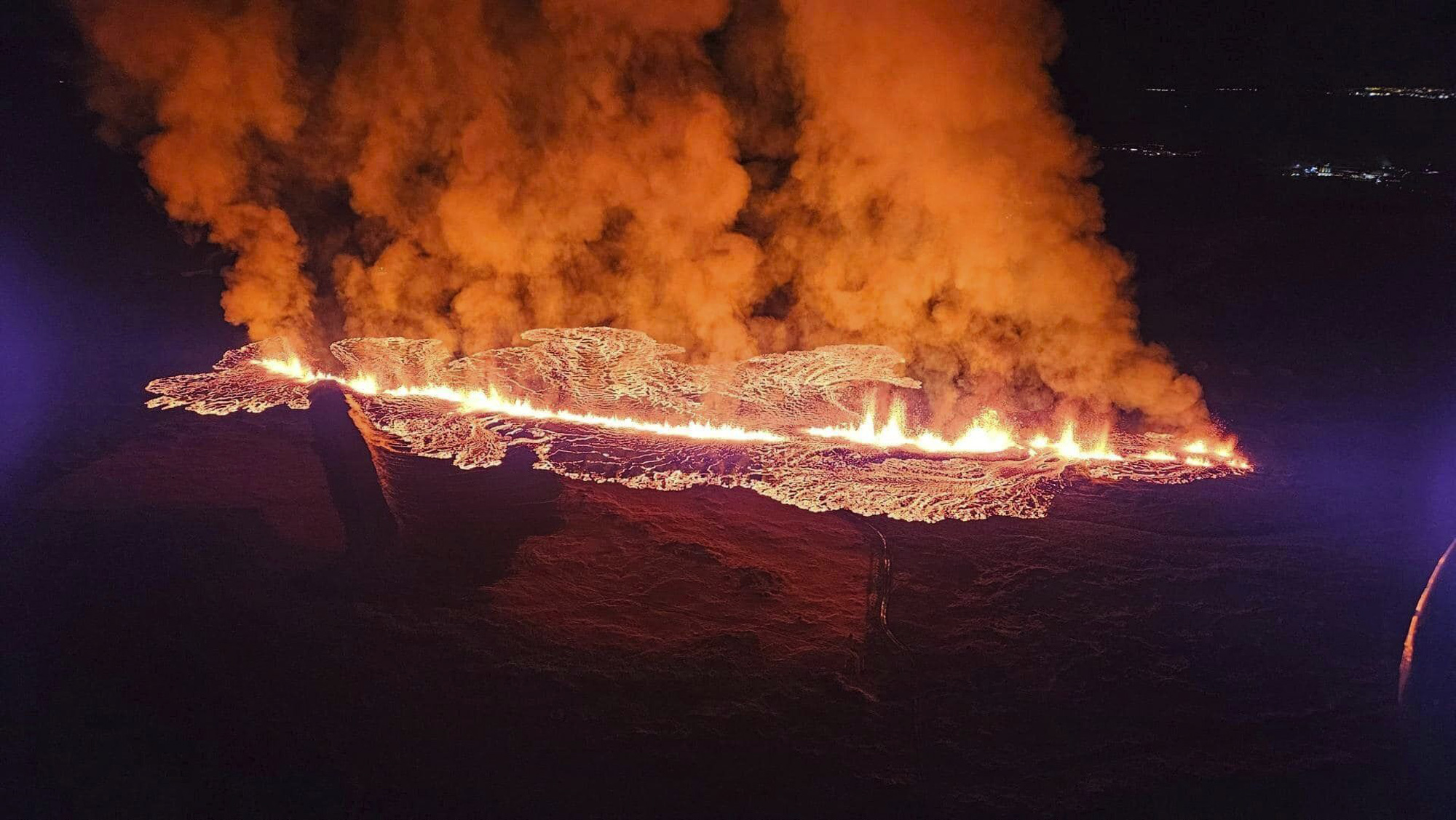
In southwestern Iceland, a volcano erupted for the second time in less than a month on Sunday, triggering the flow of lava towards a nearby community and igniting at least one home.
The eruption commenced just before 8 a.m. local time, prompted by the evacuation of the town of Grindavik following a series of small earthquakes, as reported by the Icelandic Meteorological Office. Subsequently, a second fissure opened near the town’s edge, and lava gradually advanced towards residential areas.
Residents, like Reynir Berg Jónsson, could only watch the unfolding events on cameras, feeling helpless in the face of nature’s force. Grindavik, home to 3,800 people approximately 50 kilometers southwest of Reykjavik, had undergone evacuation in November due to earthquakes creating significant cracks between the town and the Sýlingarfell mountain. The Blue Lagoon geothermal spa, a major tourist attraction, had also temporarily closed.
The volcano erupted on December 18 after defensive walls were constructed in hopes of diverting lava away from the community. However, these barriers north of Grindavik have now been breached, and lava is advancing towards the town, surprising meteorological experts.
Benedikt Ófeigsson from the meteorological office expressed the ongoing surprise, stating, “Things were slowing down after the eruption started, but about half an hour or an hour ago they started to pick up speed again. We are no longer seeing a slowdown in the town.”
Iceland, situated above a volcanic hot spot in the North Atlantic, typically experiences an eruption every four to five years. The 2010 eruption of the Eyjafjallajokull volcano was particularly disruptive, causing ash clouds that affected transatlantic air travel for months. However, the current eruption on the Reykjanes Peninsula is not expected to release substantial amounts of ash into the air, and operations at Keflavík Airport are continuing as usual.
Before the recent eruptions, the Svartsengi volcano area had been dormant for approximately 780 years. Fagradalsfjall, a few kilometers east, experienced dormancy for 6,000 years before becoming active in March 2021. The latest eruption surpassed previous ones in recent years in terms of intensity.